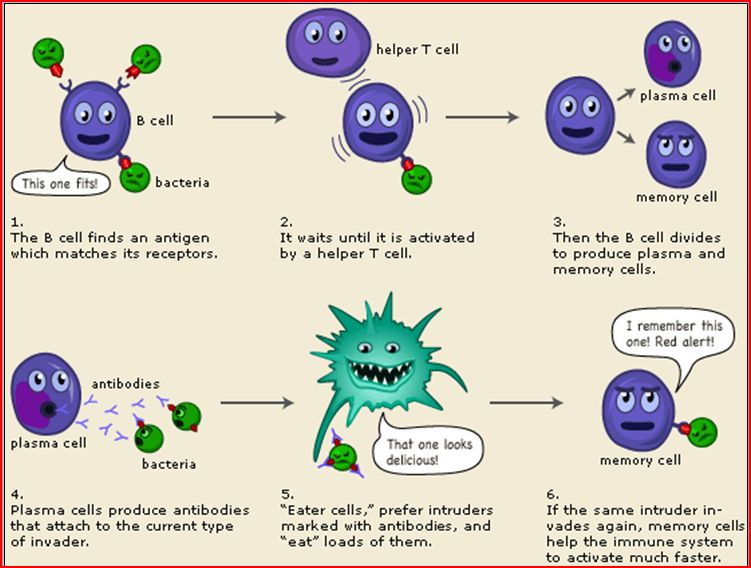 This 3D medical animation
This 3D medical animation shows how antibodies stop harmful pathogens from attaching themselves to healthy cells in the blood stream. The animation begins by showing normal red and white blood cells flowing through the blood stream. A single pathogen appears onscreen slowly moving toward its destination on the surface of a cell. The tubular extensions on the pathogen are surface proteins which attach to the surface of a white blood cell. As the animation continues, more pathogens continue to attach to the white blood cell, rendering it ineffective.
During the immune system response, Y-shaped antibodies begin attacking the pathogen. The antibodies completely block the pathogen from attaching to the white blood cell, "tagging" the pathogen so that one of the immune system's leaner and meaner cells, a macrophage, appears onscreen to engulf and digest the pathogen.
 Click here for a short animation of how antigens stimulate antibody production. There are several other immune system animations on the right side of the page! Enjoy:)
Click here for a short animation of how antigens stimulate antibody production. There are several other immune system animations on the right side of the page! Enjoy:)

